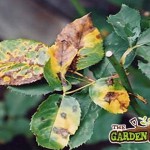Rose care is an art within itself. There are many facets and tricks of the trade to achieve the healthiest and best performing plants. But if you can keep on top your pest issues through the use of rose clear and pruning requirements then there is no reason why your roses won’t be blooming from May until late November.
- Blackspot
- Greenfly on roses
- spraying roses
Rose clear is certainly the first product to use to achieve healthy and disease free roses. Roses suffer from a range of pest and diseases including:
- Aphids or greenfly (the most common pest)
- Powdery mildew
- Rust
- Blackspot (the most common disease)
The convenience of rose clear is that this signal chemical will control all of the above problems and more. But because of the susceptibility of roses to diseases you should apply rose clear regularly. There is nothing worst than the sight of a rose brush which has not been treated for blackspot or aphids. Both these pests can quickly spread around a single plant and then from one plant to the next. The result is a weakened and unsightly rose bush with fewer, smaller and shorter lived blooms
If you intend on protecting your roses then you should begin applying rose clear in mid April, and continue to apply every 4 weeks until the end of September. Application is best made in the morning in calm conditions. There are a number of products on the market including ready to use rose clear, concentrated rose clear and rose clear ultra. Each has its own advantages but for those who don’t want to spend time reading instructions and diluting down in water, the RTU ready to use rose clear is most effective. When applying ensure a good coverage of plant’s foliage. If rose clear is applied before the first signs of blackspot, it will prevent blackspot from occurring.
Other ways to control against blackspot:
- Rake up and remove old leaves from infected plants including rose, sycamore and maples
- Clean secateurs between pruning of different rose plants
- Spray plant with liquid sulphur (must be done before blackspot appears)
- Don’t wet foliage when watering
- Ensure good air flow & circulation between plants – so space roses far enough apart
Once your pests are under control there is just the matter of the following tasks to ensure good roses:
- Deadheading – remove flowers that have faded
- Mulching – add a good layer of organic matter around plants in spring
- Feeding – plants benefit from a potassium based feed under growing season
- Pruning – depends on type, but generally cut back to 1ft off ground level in early spring


